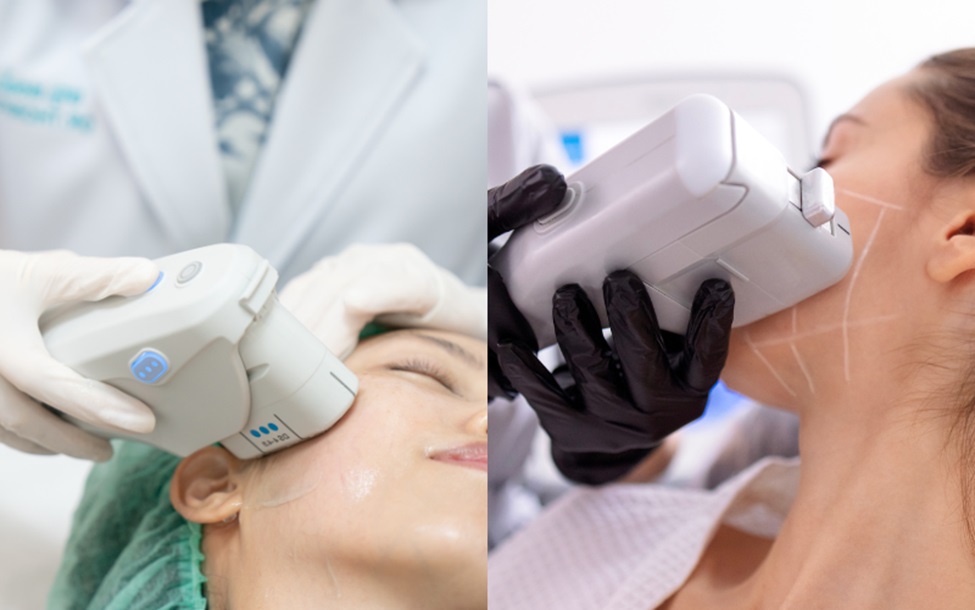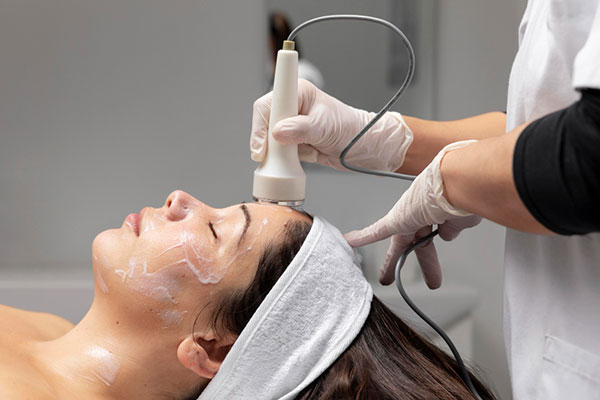
When choosing between Ultherapy and High-Intensity Focused Ultrasound (HIFU) for non-surgical skin tightening, understanding the key differences and benefits of each treatment is crucial. Both procedures utilise ultrasound technology to stimulate collagen production and enhance skin appearance, but they have distinct features and advantages. This article will explore Ultherapy and HIFU, helping you decide which might be the best option for you in Singapore’s medical aesthetic clinics.
Understanding Ultherapy
Ultherapy is a non-invasive treatment that uses focused ultrasound energy to target deeper layers of the skin. It’s known for its ability to lift and tighten the skin, especially around the brow, chin, and neck areas. The procedure works by heating the tissue at precise depths, which triggers the body’s natural healing process and stimulates collagen production. This results in tighter, firmer skin over time. Ultherapy is particularly valued for its precision and depth control, making it a suitable choice for those looking for significant skin lifting and tightening effects.
Exploring HIFU
High-Intensity Focused Ultrasound (HIFU) also utilises ultrasound technology but operates differently compared to Ultherapy. HIFU focuses ultrasound energy on specific points in the skin, generating heat to promote collagen and elastin production. This method is effective for improving skin elasticity and reducing wrinkles. HIFU is often preferred for its ability to treat larger areas quickly and efficiently. Its versatility makes it an appealing option for those seeking overall skin rejuvenation.
Treatment Areas and Applications
Ultherapy and HIFU have overlapping yet distinct treatment areas. Ultherapy excels in targeting deeper layers of the skin, making it ideal for lifting and tightening in areas like the brow, chin, and neck. It is often used to address more pronounced sagging and laxity. In contrast, HIFU can treat broader areas more quickly, making it suitable for overall skin tightening and wrinkle reduction. Understanding which areas you want to treat can help determine which technology might be more appropriate for your needs.

Procedure and Comfort
The procedure for both Ultherapy and HIFU involves applying ultrasound energy to the skin, but there are differences in the experience. Ultherapy is known for its precision, which may result in a more targeted and potentially more intense sensation during the treatment. HIFU, on the other hand, tends to be less intense due to its broader energy distribution, though individual experiences can vary. Both treatments are designed to be non-invasive with minimal downtime, but the level of discomfort and recovery time may differ based on personal tolerance and the specific areas being treated.
Results and Duration
Both Ultherapy and HIFU require multiple sessions to achieve optimal results, and the effects develop gradually over time. Ultherapy typically shows visible results in a few months, with ongoing improvements as collagen production continues. The results can last for a year or more, depending on individual skin conditions and maintenance. HIFU also offers gradual results, with visible improvements often appearing within a few weeks and continuing to develop over several months. The longevity of results from HIFU is similar, with a typical duration of up to a year.
Choosing a Medical Aesthetic Clinic
Selecting a medical aesthetic clinic in Singapore for Ultherapy or HIFU involves considering several factors. Look for clinics that offer comprehensive consultations and customised treatment plans. Qualified practitioners with experience in both technologies can provide valuable insights and recommendations based on your specific needs. Additionally, checking patient reviews and testimonials can offer an idea of the clinic’s reputation and the results you might expect.
Cost Considerations
The cost of Ultherapy and HIFU can vary depending on the clinic, the extent of the treatment, and the number of sessions required. Generally, Ultherapy tends to be more expensive due to its advanced technology and precision. HIFU may offer a more cost-effective option, especially for treating larger areas. It’s important to discuss pricing and payment options with your chosen clinic to ensure that you’re making an informed decision.
Final Thoughts
Both Ultherapy and HIFU offer effective non-surgical solutions for skin tightening and rejuvenation. Your choice between the two should be guided by your specific skin concerns, treatment goals, and personal preferences. Consulting with a reputable medical aesthetic clinic in Singapore can help you make an informed decision and achieve the desired results.
For more information about Ultherapy vs HIFU and to determine which medical aesthetic clinic in Singapore offers the best option for your needs, contact Healthsprings Laser and Aesthetic Clinic today.

